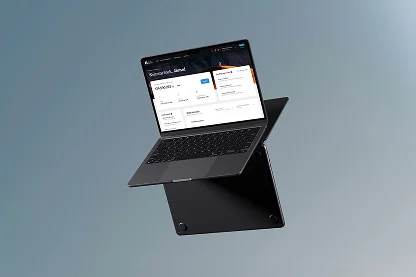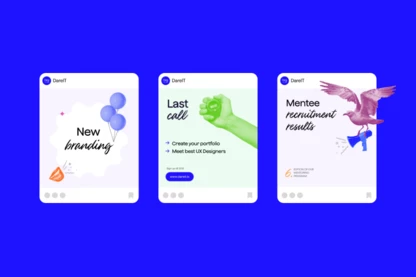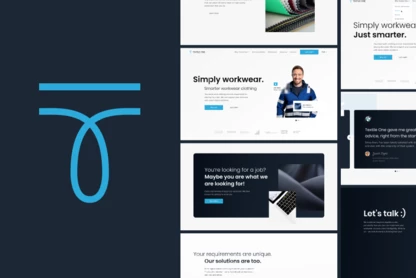Feeding the fast-food
giant’s operations with
high-quality data.
KFC – Analytics
KIOSK
Website
MOBILE APP
2020

[ around the web ]
[ PROJECT SUMMARY ] KFC aimed to improve the digital experience for users across three European countries: Poland, the Czech Republic, and Hungary. And to do that, the fast-food giant needed a proficient data analytics system. A zinger of a challenge – but there was no way we were chickening out (sorry).
Industry:
Food commerce
Products:
E-commerce
Market:
B2C
[ HIGHLIGHTS ]
-
American fried-chicken brand headquartered in Louisville, Kentucky
-
World’s second-largest restaurant chain
-
More than 23,000 locations around the world
-
Present in 136 countries
Scope of work
[ Business Need ]
The next course
– good data
KFC kicked off their cooperation with Flying Bisons with a successful redesign of their online sales experience. That project proved to be the start of a long and fruitful relationship. And we’ve since continued to sprinkle our special digital spice mix on KFC’s website, mobile app and food-ordering kiosks. The natural next step was to launch a data-driven process to optimise the e-commerce experience. And that’s why KFC decided to completely revamp the business’s analytics tracking – all to make customers happier and, as a result, boost the business.
[ Approach ]
Spicing things up
We started the process, as ever, by gathering information and understanding the client’s requirements. We looked at previous digital analytics decisions and agreed which channels we’d be responsible for.
We then carried out a study of all KFC’s digital sales channels and how they co-exist across key central and eastern European markets. Once we’d confirmed the scope with the client, we did a thorough review of the functionalities of each channel. The goal was to identify areas that could work more cohesively.
In our efforts to optimise the e-commerce experience, we noticed a lack of data points to help us better understand user behaviour. So, to enable us to level-up KFC’s data collection and analytics tracking, we decided to run an exhaustive audit on the existing website. The process consisted of:



-
Audit checklist

We used a tried-and-tested framework to assess the suitability of the existing analytics set-up. This helped us quickly and reliably identify areas for improvement.
-
Areas for improvement

Based on our audit findings, we segmented the key areas for improvement into categories such as data quality, page tracking, e-commerce, acquisition, and user behaviour.
-
Recommendations

Once we’d segmented the areas for improvement, we created a clear and accessible list of recommendations. We also assigned priorities, allowing the client to focus on crucial items first.
Together, we assessed the existing analytics stack across different sales channels and evaluated the need for a different suite of tools. Eventually, we decided to standardise the use of Google products across web, app, and kiosks.
Nailing down the analytics planThe insights we gathered during the discovery and strategy phases formed the foundation for our analytics plan. The plan, in short, is a centralised resource that allows us to consolidate all necessary information and functions into one document. Details you might find in the document include:
A list of events and attributes that need tracking
User data we’d like to collect
Metrics and segments of importance to the client
Implementation guides for tech developers
The implementation guide is part of the wider analytics plan – but it’s so important it deserves a special mention. We designed the analytics plan with tech development in mind, including reference points and details specifically for implementation purposes.
We created clear guidelines to help developers kick-start implementation with minimal extra hand-holding. And we customised the implementation guide based on the analytics stack we’d agreed with the client.


[ IMPLEMENTATION ]
A dish cooked
to perfection
Once the analytics plan was approved by the client, we moved on to the tech implementation. This part of the process was managed by KFC’s external development partners. They used our analytics plan as their main point of reference, and we remained on hand to provide expert knowledge and guidance wherever they needed it.

With the tech wizardry under way, we started to set up and configure the necessary analytics tools for the project. We were particularly keen to make sure everything was ready for testing as soon as the tech implementation was complete.
Our client uses Google Analytics 360 (GA360) as their main analytics tool – so we built and customised the analytics plan around it. We used advanced features such as custom dimensions and metrics, and integration with Google BigQuery. Other technologies like Measurement Protocol were also needed for certain scenarios.
Google Tag Manager (GTM) is another tool used to manage analytics tracking for the website. The analytics plan we created acted as a reference point for us to configure the necessary tracking. As there was a legacy implementation in GTM, we had to ensure that migration for any important tracking was done correctly, especially if it was to be used for performance marketing.
We used Firebase Analytics to track users on the mobile app. We decided to migrate from Google Analytics to Firebase Analytics, knowing that Google’s support for GA was soon to end. Some minor configuration was needed to set up conversions for marketing.
Once both the tech implementation and analytics configuration were complete, we moved on to possibly the most crucial phase of the project. The quality assurance process helps iron out any potential issues with tracking before it goes live on the website.
Using the analytics plan as a reference point, we verified that the tracking had been implemented correctly and that the right data was being passed to the analytics and marketing tools. We went through several rounds of testing until we were satisfied the data quality was on point.
As project leaders, it was important for us to build strong relationships with the companies in charge of tech development. To keep the analytics plan aligned with the client’s performance marketing efforts, we also worked closely with the marketing agencies appointed by KFC across Poland, the Czech Republic, and Hungary.
[ Results ]
An effective system
— and a feast for the eyes
As a result of our cooperation, KFC could enjoy a proficient analytics system for their mobile solution, website, and physical kiosks in restaurants.
Specifically, KFC got access to reports and dashboards (a fest for the eyes!) providing overview of digital performance and user behaviour. These include:
Key performance indicators (KPIs)
KPIs show the health of the business. Trends and comparisons of previous periods are also included to assess commercial growth.
Funnels
Funnels visualise the key user paths across KFC’s digital platforms. These provide insights on which parts of the funnel to optimise.
Conversion rates
As well as conversion rates related to e-commerce, the system includes conversion rates for various digital features, such as upsell pop-ups.
The data KFC collects and visualises helps the business improve the customer experience even further. It also allows it to carry out conversion-rate optimisation and A/B testing, to help the chain precisely understand what works best for their users.
Overall, with the new analytics system, the fast-food giant got an empowerment to further raise customer satisfaction – and, importantly, strengthen the business.
More Case Studies
More
Case Studies
Unleash Your
Digital Potential
- Today.
Join our list of clients. You’ll be in good company.






































